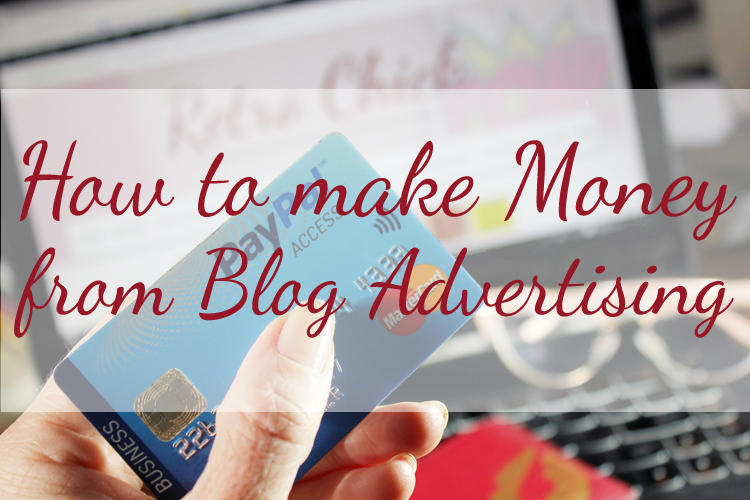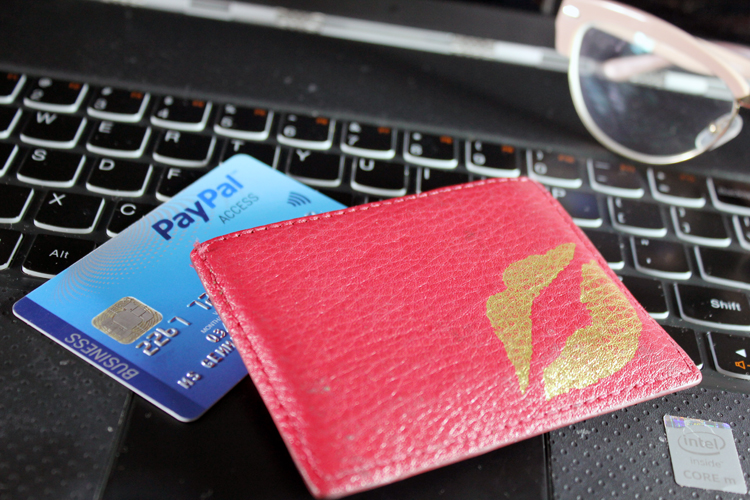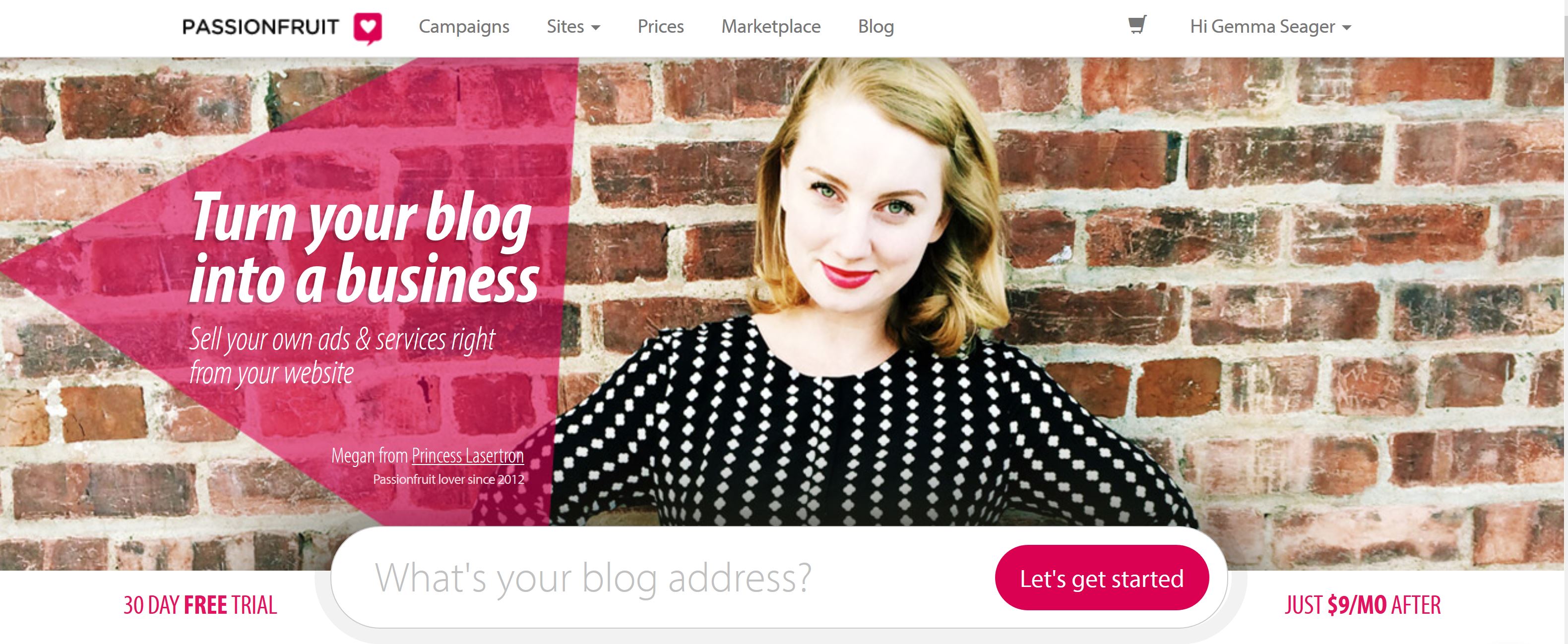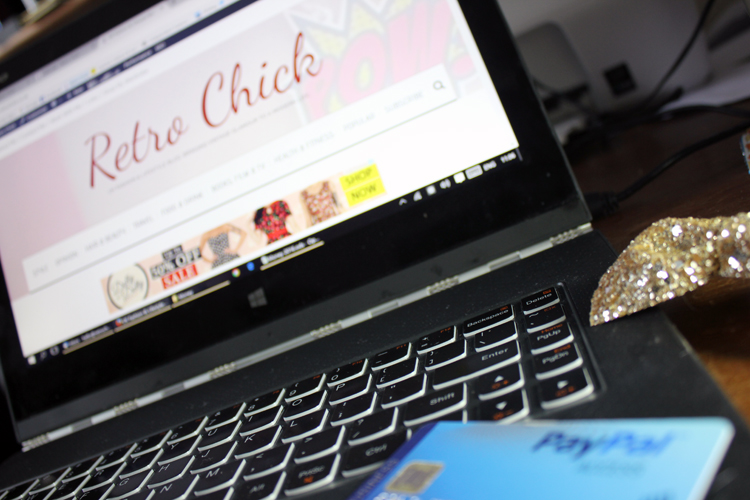I get asked a lot how exactly I make money from blogging.
Sometimes it’s kind of rude, like the time I got virtually corned by a bloke in a pub who pretty much wanted a month by month break down of my average income. But most of the time it’s genuine interest, either by people with blogs who would love to monetise them or people who just can’t get their heads around the idea of how I could possibly turn posting photos of myself wearing frocks into actual money with which I could pay my gas bill.
So, I thought it might be helpful to write a few posts with some tips on how bloggers (or specifically me) make money. Today, I’m going to start with advertising.

Display advertising is the most obvious way to make money.
Having people pay you to display a picture and a link on your blog for a certain period of time is the simplest form of blog advertising, but there are several ways of doing it. These are the ones that I use.
Google Adsense
This is the place that most bloggers start with advertising. Google Adsense is a pay per click advertising model where you get paid a few pennies for everytime someone clicks an ad unit on your blog.
You can create ad units in any size you like, set them up to only take image or text ads and exclude any categories of advertising you don’t like, if you don’t want gambling or plastic surgery showing up on your blog for instance.
The upside of Google Adsense is that it’s super easy to use. The downside is that the pay per click model means you’ll need a fair bit of traffic before you see regular payouts from it as the amount you earn can be very small.
Adsense ads are contextual, that means the same ad doesn’t show in the spot all the time, it depends on the content around it, and on sites that the people visiting your blog have visited in the past. If you’ve ever looked at a pair of shoes and then felt like they were following you around every website you visit for the next week, contextual advertising is the reason why. Contextual advertising does increase your chances of getting a click. If your post on hair products has a conveniently placed ad for hair products next to it then a reader who visited looking for hair products is more likely to click on it. Which is a bonus, but it does mean that these units can also throw up some random things sometimes and you don’t have complete control over what ads are shown.
In my experience Adsense ads do best on the sort of posts that people have found through search engines, rather than those visited by regular blog readers. To make the most of that and minimise the amount of ads that regular readers see I use a WordPress Plugin called Whydowork Adsense (Which seems to have disappeared from the WordPress Database, but Ad Injection does the same thing) using this plug in I can set it up so that ads appear above posts once they reach a certain age, so a regular reader visiting a post written in the last week won’t see ads, but someone who’s found one of my older posts through a search engine will.

Selling Your Own Adspace
When I started taking direct sales blog advertising I asked people to email me, and then we took it from there, but these days there are programs you can use to help you streamline the process. Passionfruit ads is the program I use to sell my ad space. It charges a yearly fee and you can set up any number of different sized ad spots for multiple websites, as well as using it to sell sponsored posts. Its market place is also a good place to see what other bloggers are charging. There is also nothing to stop you contacting brands that you think might be interested in advertising and offering them a spot. They might not take it, but you never know unless you try!
If you want to sell advertising on your blog you need to make sure people know that you do. Creating an “Advertising” or “Work with me” page is a good way to do this. You can install a Passionfruit ad shop on there, or just provide a list of your advertising options and prices. To make it clear you could create placeholder ads that say “advertise here” that go to your advertising page when clicked.

Online ad sizes are measured in pixels. When I started 125×125 ads were common, but from what I see now ads of around 300×300, 250×250, or 300×250 are more common on most blogs.
Another slightly different way of selling advertising on your blog is through Project Wonderful. Project Wonderful allows people to bid on your advertising space on a daily basis. You can personally approve bidders if you want to, and set a minimum bid amount. It’s a great way for small businesses with minimal budgets to try out advertising, you might not earn a huge amount from it, but for lower traffic and very niche sites you can earn more than you would through Google Adsense.
What should I charge?
I remember the very first ad I sold, from someone who emailed me out of the blue asking about ad space. I panicked as I had no idea what to charge for advertising space. What to charge when someone emails you and asks about advertising is a tricky business, but there are a few tips you can use to help work it out. First, and most obviously, what are other people charging? If you can find out what other blogs with similar content and traffic to you are charging then you can price yourself accordingly. Check out their advertising pages, see if they advertise their traffic stats and price per ad.
If you can’t find anyone to compare yourself to then in my experience your price will depend greatly on who you are selling advertising space to. Most of my advertisers have always been small businesses taking a chance on an ad to see how it worked, which suited the kind of quirky things I liked to write about, so my pricing has always remained affordable. My advice is that if you are a small blog with under 10,000 page views a month, start at £5 an ad. Then add an extra £5 for every 10,000 additional page views if you are working with small businesses. If you are attracting direct advertising from international brands then you can charge much more, but for most of us this is a good starting point.
Ad Networks
Ad Networks ask you to install a piece of code on your blog, and then they sell advertising on your behalf and pay you, minus a percentage commission. Some blog networks will have a minimum amount of traffic they want you to be getting before they will take you on, and they sell the ad space to companies based on the large amount of traffic they can offer across all the blogs on their books.
Handpicked Media are a great one for Fashion Bloggers and they run a lot of events during London Fashion Week as well. Another network worth trying is Nuffnang.
Ad networks mean you have less control over the ads shown on your site, and they will take a percentage commission, but you might also make more money than you would with direct sales as the network can sell your traffic as part of a package, so a company that might not be interested in dealing directly with 10 individual bloggers getting 20,000 page views a month, might deal with a network that can sell them 200,000 page views and act as the middle man between them and those 10 bloggers.
Positioning your Ads

Once you’ve decided what kind of advertising you’re going to use you need to decide where to position the ads on your blog. Most blog templates come with a sidebar, so the most obvious place to start is with sidebar advertising. An ads placement on your blog will make a big difference to the number of clicks it’s likely to receive.
Above the Fold is a phrase you’ll hear a lot, and refers to ads that can be seen as soon as someone opens a web page. This might be right at the top of your sidebar, or possibly above or just below your header. If you are selling advertising direct then you can sell these spots at a premium, they are also a good spot for cost per click advertising like Google Adsense as they will likely get clicked on more often.
You can also sell ad space directly in a post, either at the top or bottom, or even directly in the middle of content. Whether you decide to do this will depend on the kind of content you write and your readers. Lots of advertising in the middle of content can be very irritating for regular readers, but if most of your traffic is from search engines, or social sharing then it might work better for you. The only way to find out is to experiment.
[separator type=”thin”]
And, er, that’s all I can think of right now. As soon as I hit publish I will think of a whole load of other deep and meaningful pieces of wisdom to impart, but in the meantime, if you have any questions, that’s what the comments box is for!
[separator type=”thin”]
Links: Google Adsense ♥ Passionfruit Ads ♥ Project Wonderful ♥ Handpicked Media ♥ Nuffnang


Thanks Retro Chick
Brilliant timing for me! Looking to find different ways of funding my wedding blog and at the same time also interesting advertisers for my readers. Think Passionfruit Ads could be a great option and I am hoping it will give me more time to write articles.
I also make money on my site with affiliate sales, they are quite easy to set up and if you are selling more expensive items they can be a good earner.
Love your site.
Suz
Yes, I’m planning to do a couple more of these on affiliate sales and sponsored posts as well. I started putting them all in one post but it was HUGE!
I can just imagine! There is a whole industry out there on how to make money online! Fitting it all in to one blog post would have been impossible.
Agree that sponsored posts are a biggie and I think will become even more important as more and more people install Adblockers which will mean less ads will be seen.
This is such a great post and very helpful, thanks for sharing this Gemma. Love, Kirsten xx
http://www.thelifbissue.com
Dear Retro Chick, thank you so much for this article. Your advice has been so helpful and provides me with a lot of confidence. The section written about estimating how much to charge individual advertisers resonated with me the most. You have given me a vast about of knowledge and have my upper most gratitude.
My question is more general. If there was 5 things you wished someone had told you when you first started your blog in order to greatly boost your success, what would it be?